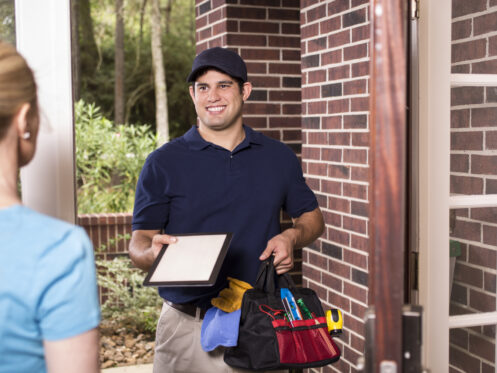Every household has a Mr. or Mrs. Fix-It. It’s part of being a homeowner! You want to have control over what goes in your home, what you pay for, and what you get. As Fix-It people ourselves, we understand the DIY drive, and we want to help you get there.
In some cases, however, we do suggest hiring a professional when it comes to water heater installation in Portland. Hiring a licensed local plumber will save you time, money, and sweat off your brow – not only that, but it may also be an issue of safety. Not every handyman is properly qualified to install your water heater up-to-code – only an actual plumber has the tools and skills you need.
Although we don’t recommend you try it yourself, our plumbers want you to understand the process. Here’s what it takes to install a water heater – and why we think it’s best left to the experts!
5 Steps of Water Heater Installation
This is the simplified version of what your plumber is doing when he comes to your home to replace or upgrade your water heater. Some steps may vary depending on the location, appliance model, and power source, but the basics are always the same:
- Set-Up – First, make sure the gas and water main valves are fully closed. Drain the existing water tank into a bucket and remove the water
- Hook-up Your Water Heater to a Power Source –Water heaters can come as either electric or natural gas-powered models. An electric model will need to be wired with 30 amps of electricity for a 40-gallon model. A natural gas model must be connected to a gas line, which will always need to be done carefully – you don’t want to strip the screw or cross threads!
- Establish Proper Ventilation – Your current water heater has ventilation in place to carry away dangerous byproduct gasses from your water heater to the outdoors. However, the new model may have a different ventilation setup. It is very important to make sure the ducting travels from the heater to the outside with no leaks, cracks, or bending.
- Attach the Water Lines –Be sure to screw each pipe in tightly! Flexible PVC connectors are easier to install, but you should use copper piping wherever you expect there to be heat.
- Test Operation – Check to see that the pilot light is fully blue, not yellow or orange, and that smoke is being pulled through the ventilation. Make sure there are no leaks – you can do this by running soap water through your water heater and then inspecting for bubbles at the seams.
As you can probably tell, it’s quite a process. Certainly not impossible for your average handyman, but in a pinch, why risk it? You can get upfront pricing, great financing, and efficiency rebates from your local plumbers. We’ll show you how! Call 3 Mountains Home Services today for a consultation on water heating in Portland!


